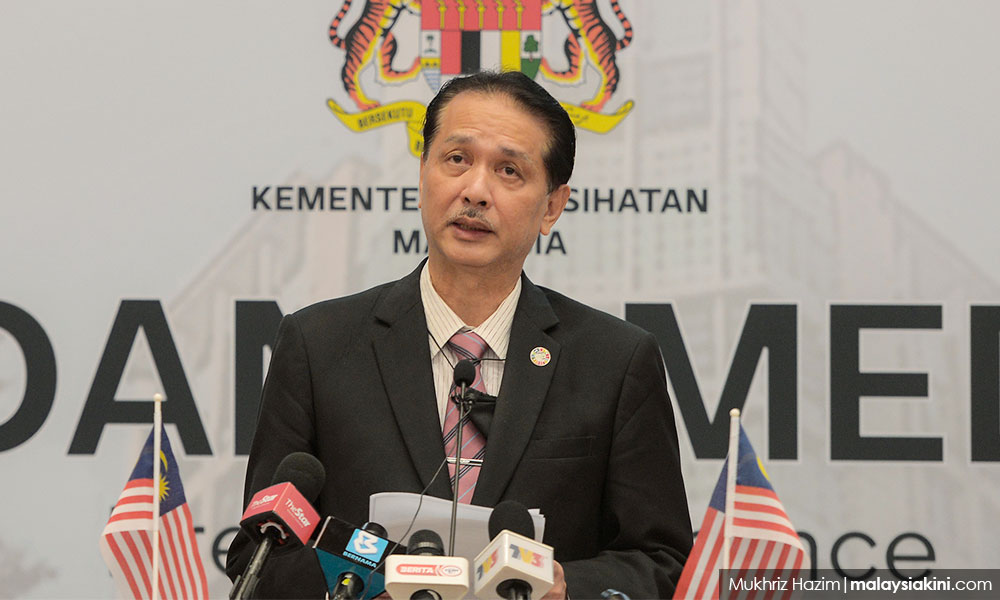
COVID-19 | The Institute of Medical Research (IMR) has detected the D614G mutation in Covid-19 samples taken from two additional clusters, bringing the total to five clusters so far.
The mutation is believed by some experts to make Covid-19 even more infectious than the original.
In a Facebook post today, Health Ministry director-general Dr Noor Hisham Abdullah said the IMR has isolated and cultured 32 virus samples.
These were taken from the Benteng LD cluster (23 samples), Sivagangga cluster (four), Tawar cluster (three), Sungai cluster (one) and Bukit Tiram cluster (one).
“As suspected, the D614G mutation has been detected in all 32 Covid-19 samples,” he said.
In addition, Noor Hisham said researchers at IMR have also compared the genetic makeup of the virus samples to those previously studied in the Sivagangga cluster and Tawar cluster.
“Again, as suspected, all the virus isolated from the clusters in Kedah (Sivagangga, Tawar, and Sungai) are related and there is a high possibility that it originated from a common source.
“All 23 virus (samples) from the Benteng LD cluster, meanwhile, were found to be similar but not related to the Covid-19 virus found in Kedah, even though all of them have the D614G mutation,” he added.
He said these were preliminary studies, and several follow-up studies are underway.

In the meantime, Noor Hisham said the findings mean the community would have to be even more cautious to prevent the spread of the disease, since the strain is more infectious and can spread easily.
He reminded people to abide by standard operating procedures (SOPs) and seek medical treatment if symptoms appear.
The SOPs include maintaining a safe physical distance of at least one metre; maintaining high levels of personal hygiene especially by handwashing with soap and water, or hand sanitisers; and by wearing a face mask when in public, crowded, or confined spaces, or while in close conversation.
Previously, the IMR had identified the D614G mutation in samples from the Sivagangga, Tawar, and Bukit Tiram clusters.
In addition, Noor Hisham had already announced on Aug 27 that the Sivagangga and Tawar clusters likely have a common origin, although an epidemiological link has yet to be established between the two clusters.
The Sivagangga cluster started when restaurant owner Nezar Mohamed Sabur Batcha broke quarantine to operate his restaurant in Baling, Kedah. He was sentenced to five months’ jail and fined RM12,000.
The appearance of the Sivagangga cluster was quickly followed by several other clusters in Kedah, leading to administrative enhanced movement control orders being enacted in several areas in a bid to contain the disease.
Of the five D614G clusters identified so far, the Benteng LD, Tawar, and Sungai clusters are still considered active.
The Health Ministry had ended its monitoring for the Sivagangga and Bukit Tiram clusters after no new infections were detected for 28 consecutive days.
Some experts believe that the mutation makes Covid-19 even more infectious, based on laboratory studies and the fact that the D614G strain has become the dominant Covid-19 strain around the world.
Others cautioned against such conclusions, saying that laboratory studies may not reflect real-world situations and D614G’s prevalence may be a fluke. The critics noted that the D614G may have simply found itself in the right place at the right time when Europe experienced large outbreaks in March. - Mkini



No comments:
Post a Comment
Note: Only a member of this blog may post a comment.